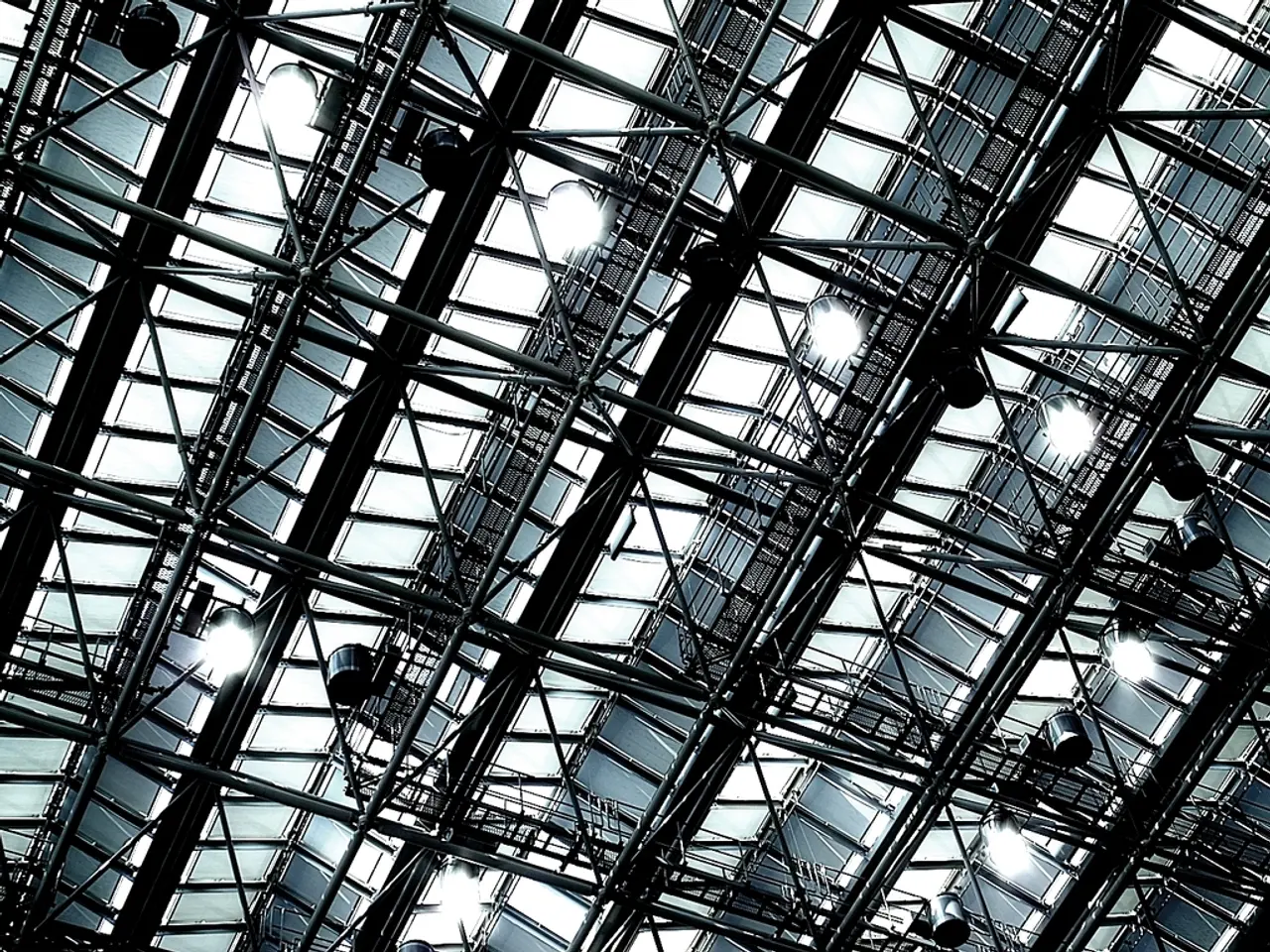Rooflight styles explained – a rundown on selecting the ideal design for your residence
In the world of home renovation and design, rooflights play a significant role in illuminating and ventilating spaces. This article delves into the various types of rooflights available, each with its unique advantages and disadvantages, to help you make an informed decision for your home.
Flat Glass Rooflights
Flat glass rooflights are a popular choice for their minimalist aesthetic and ability to provide maximum natural light. They are low maintenance, energy-efficient, and suitable for flat roofs. However, fixed versions do not offer ventilation, which may not be ideal in spaces where air circulation is essential.
Roof Lanterns
Roof lanterns create a striking architectural feature, filling central areas or extensions with daylight. They are often pitched or multi-faceted, improving their aesthetics. However, they are more complex and costly to manufacture and install, requiring structural support due to their size and weight.
Conservation & Heritage Rooflights
Designed to comply with strict planning and design rules in conservation areas, these rooflights maintain historical and architectural character. They offer bespoke frames and finishes to blend seamlessly with period properties. However, they are typically more expensive due to their bespoke design and materials, and they require planning permission or approval due to their sensitive locations.
Walk-On Rooflights
Walk-on rooflights provide daylight while serving as a functional roof surface, such as balconies or terraces. They can support weight and foot traffic, allowing daylight in areas with limited roof access. However, they are more expensive due to structural requirements, and they require toughened or laminated glass for safety, increasing maintenance to keep the glass clean and intact.
Ridge Rooflights
Ridge rooflights are installed at the roof ridge, providing maximum light intake from the highest point. They offer good daylight distribution and ventilation if designed to open. However, they have a more complex installation due to the roof structure and potentially higher costs and the need for sealing against weather ingress.
Fixed vs Opening Rooflights
When it comes to rooflights, the choice between fixed and opening (ventilated) options depends on your needs. Fixed rooflights are low maintenance and offer reliable weatherproofing, but they do not provide ventilation. On the other hand, opening rooflights offer natural ventilation, reducing heat and moisture build-up, and improving air quality.
In conclusion, the selection of rooflights depends on factors such as roof type (flat or pitched), desired light and ventilation, architectural style, and local regulations. Flat rooflights tend to be simpler and less expensive but may offer limited ventilation options. Ventilated rooflights, including opening roof lanterns or skylights, are ideal for rooms needing airflow, such as kitchens or bathrooms.
This summary synthesizes the key pros and cons relevant to typical home uses for these rooflight types based on the latest available insights. By understanding these factors, you can make an informed decision to illuminate and ventilate your home in the most effective way possible.
Read also:
- Exploring the Advantages of Outdoor Group Meditation for Enhancing the Mind-Body Union
- Hidden beneath the appealing aesthetic of Consume Me's artwork lies a more ominous nature
- Reflection: Ponder the Fate of City Pigeons
- Sustainable Seafood Consumption: An Examination of Environmental Impact: A Guide for Seafood Lovers





